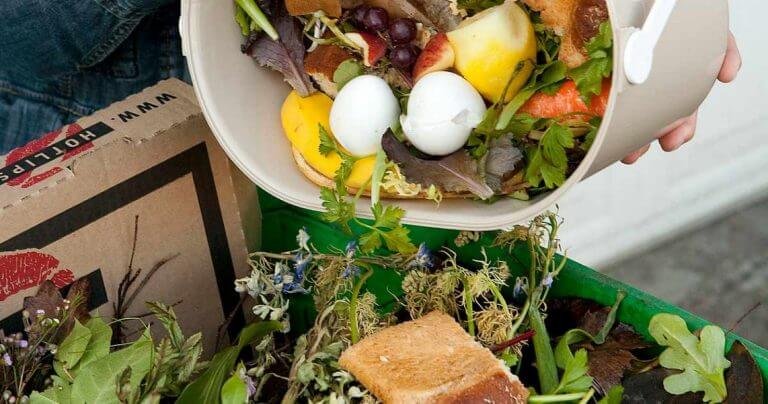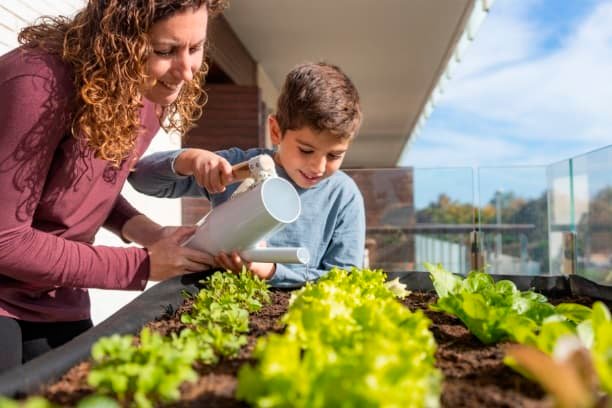How to Start A Garden From Scratch | Even As An Absolute Novice.

From bare cranky soil to a lush garden in just months, this article will teach you exactly how to start a garden from scratch.
Gardening is a venture anyone can start up in months even as a novice from day one.
However, this knowledge, though easy, is not available to all.
That’s why you get to gush anytime you wonder about starting a garden from scratch.
Well, that piece of the puzzle is solved in this article.
This guide is a step-by-step guide on how to start a garden and grow it into a luscious field in easy steps.
Also, we have classified the kind of seeds that go well when starting a garden of your own.
Have you heard of garden designs? I bet not.
You will discover some of the best garden aesthetics that leave your onlookers wondering about the skill behind the beautiful garden.
All these you will find out if you read this piece carefully.
If that’s what you intend to find, let me walk you through how to start your own garden from scratch!!!
What is Gardening?
Gardening is the act of planning and cultivating gardens either for commercial or personal purposes.
Gardening can easily become a lifelong hobby for many as there is no limit to the sense of satisfaction, enjoyment, and horticultural knowledge you get from it.
In fact, many farmers have adopted this pastime activity as a business, planting and making beautiful gardens for people and organizations.
Nonetheless, to be an efficient and exceptional gardener, you have to know the ropes of this business.

Things to Know Before Starting a Garden From Scratch.
Starting your own garden as a beginner is what is paramount to you.
However, if you launch into that space without prior plans and adequate knowledge, you will make the mistake that farmers who have walked off without an expert’s advice made.
Just before you begin your own garden from scratch, here are some things you need to know;
1. Removing the Grass is a Must.
Just like a new planting season, establishing a new garden bed means sacrificing the lawn you want to use. All the grass will have to go in for it.
When starting a garden, you will have to remove all the grasses either by using chemicals or organic methods.
Most farmers adopt other techniques such as sheet mulching or layering, polarization, or manual removal.
Whichever method you choose to adopt, ensure you have to remove the grasses from the root.
2. Garden Soil is Essential to the Garden’s Success.
Just as feed determines How Many Eggs Chickens Lay, the kind of soil you use for gardening determines how well the plants and flowers will thrive.
Even as you’re considering how to start a garden from scratch, put into consideration how to make the soil healthy for the plants.
This includes the soil’s nutritional composition and pH. However, keep in mind that some plants have an optimal soil type in which they thrive.
While you’re ensuring the soil is healthy, you can never go wrong adding compost when you start your garden.
3. Select the Right Plants.
A healthy soil with a non-viable seed will not yield the garden you envisage.
As a beginner who wants to start a garden, you need to select viable seeds.
What this means is that you need to run research on the kind of garden plants that survive in your area and their specific requirements.
4. What’s Your Preferred Garden Design?
Although a garden design is a matter of personal preference, it’s an essential part of starting a garden.
Garden design helps you know where to place your plants.
Most gardeners launch off with planting their seeds without a design in mind, your lawn or garden in the long run will look unattractive.
Basically, there are few standard design aesthetics that work. You can plant your seeds according to the following criteria;
- Design According to Plant Size: Plant your seeds so that the low-lying plants are in the foreground. These plants are used as edging. Following it are the medium-sized plants and then the tallest plants.
- Design According to Form: Here, you put the plant shape and outline into perspective when arranging a garden bed.
- Design According to Line: You can choose to design your garden using the structures within the landscape or garden as a guiding structure. This can give rise to a vertically or horizontally shaped garden.
- Design According to Plant Texture: As a beginner in the garden design skill set, you can consider the fineness or coarseness, roughness or smoothness, and heaviness or lightness of plants. Use this as a tool to create variety and visual interest.
5. Colorful Gardens are Attractive.
You can section your garden according to plant colors. Consider the colors, unity, and contrast. This gives off a good sense of ownership.
6. Planting Or Transplanting: Which is Ideal For You?
As a gardener who wants to start their garden from scratch, have you considered the planting and transplanting technique you will adopt?
Are you going to use seeds directly or potted nursery plants?
If you’re using potted plants, which technique is ideal to transplant them?
These should be your considerations.
7. Weeds Do Not Do Garden Plants Good.
Weeds will compete with the soil nutrients of your plants and that’s not good for the business.
Just as it’s necessary, remove all weeds as soon as you see them sprout.
However, be careful because some actual garden plants like snapdragons, petunias, cosmos, aquilegia (columbine), foxglove (digitalis), and marigolds look like weeds.
8. Pests are Not Good For Your Garden Plants.
Pests are destroyers of your effort.
Adopting a preventive measure is ideal to prevent them from destroying your luscious garden plants.
Uses fences for pests such as rabbits. Natural and synthetic chemicals are also good in combating pests.
However, employ a strategy that will maintain balance for a healthy garden.
So, if you seek information on how to start a garden from scratch, this should be your first consideration.
Now, how is this actually done?
What Kind of Plants is Suitable For Gardening?
Gardening plants come in varieties. And the kind of plants you will need will depend on the kind of garden you want to set up.
Generally, plants commonly used in garden beds and landscapes fall under these categories:
1. Herbaceous Annuals.
- Completes their life cycle in one growing season.
- Needs to be replanted every year.
- Some examples include; marigolds, impatiens, petunias, zinnias, and cornflowers.
2. Herbaceous Perennials And Biennials.
- Completes to their lifecycle in 2 or 3 years.
- Does not need replanting. Their foliage re-grows from its root by itself.
- Some examples include; peony, daylily and false indigo, lupine, columbine, and delphinium.
3. Woody Trees And Shrubs.
- They do not have woody stems and trunks.
- They grow from a main tree trunk or branches.
- Some examples include; common trees and shrubs.
4. Vegetables, Fruits, And Herbs.
- Capable of producing edible seeds, fruit, stems, foliage, or roots.
- Can be annual, biennial, or perennial.
- Some examples include; carrots, rhubarb, asparagus, strawberries, blueberries, peaches, and apples.
For a beginner who wants to start a garden from scratch, these are some of the best categories of gardening plants to select from.
Your choice should be based on the kind of garden you want to raise.
How Do I Start A Garden Without Prior Knowledge?
If you are thinking of starting a garden from scratch, it is as simple as grabbing some mixed seeds, preparing the soil, scattering the seeds, and watching the garden grow!
What this actually means is that there is no one size fits all strategy on how to start a garden for beginners.
However, a little guide and an expert’s gardening advice will surely make a difference in a startup garden.
If you want to start a garden from scratch, here’s what to do;
- Get land that will fit your gardening purpose.
- Clear it off of all grasses, weeds, and stumps from the roots.
- Choose viable seeds of the desired plants, flowers, or vegetables you will want to grow in your garden.
- Plant the seeds using the gardening design we explained above. Ensure to consider spacing as well.
- Tend and water the seeds as they grow in your garden. Also, add compost as needed.
- While they grow, remove weeds and ensure they are not worried by pests.
- Move and add plants when necessary.
- Watch your garden grow beautifully.
- Harvest and enjoy!!!
With these few steps, you can effortlessly start your garden from scratch even as a beginner without prior gardening knowledge.
Frequently Asked Questions About Starting Your Garden From Scratch.
What is the Cost of Garden Seeds?
Generally, the cost of garden seeds largely depends on your location. However, 500 mixed seeds can cost about $8. On a wider scale, it shouldn’t cost you more than $20.
What is the Best Mix For Your Garden Plants?
The best mix of garden plants depends on personal preference.
However, a mix of perennials, annuals, wildflowers, and edible plants can never go wrong.
What is Thinning in Gardening?
Thinning is the act of removing excesses from plants.
As the garden seeds sprout, you have to ensure that they have room to spread out. This you can do by pinching off those you don’t want.
However, we recommend that you do not thin in haste so as to give chance for a variety of plants to grow and thrive.
Summary
You can agree with me that starting a garden is not as herculean as many think it to be.
As long as you have land and viable seeds or nursery plants, then your garden can be up and running in a few months.
What are your thoughts about starting a garden? Leave a comment in the comment section.





